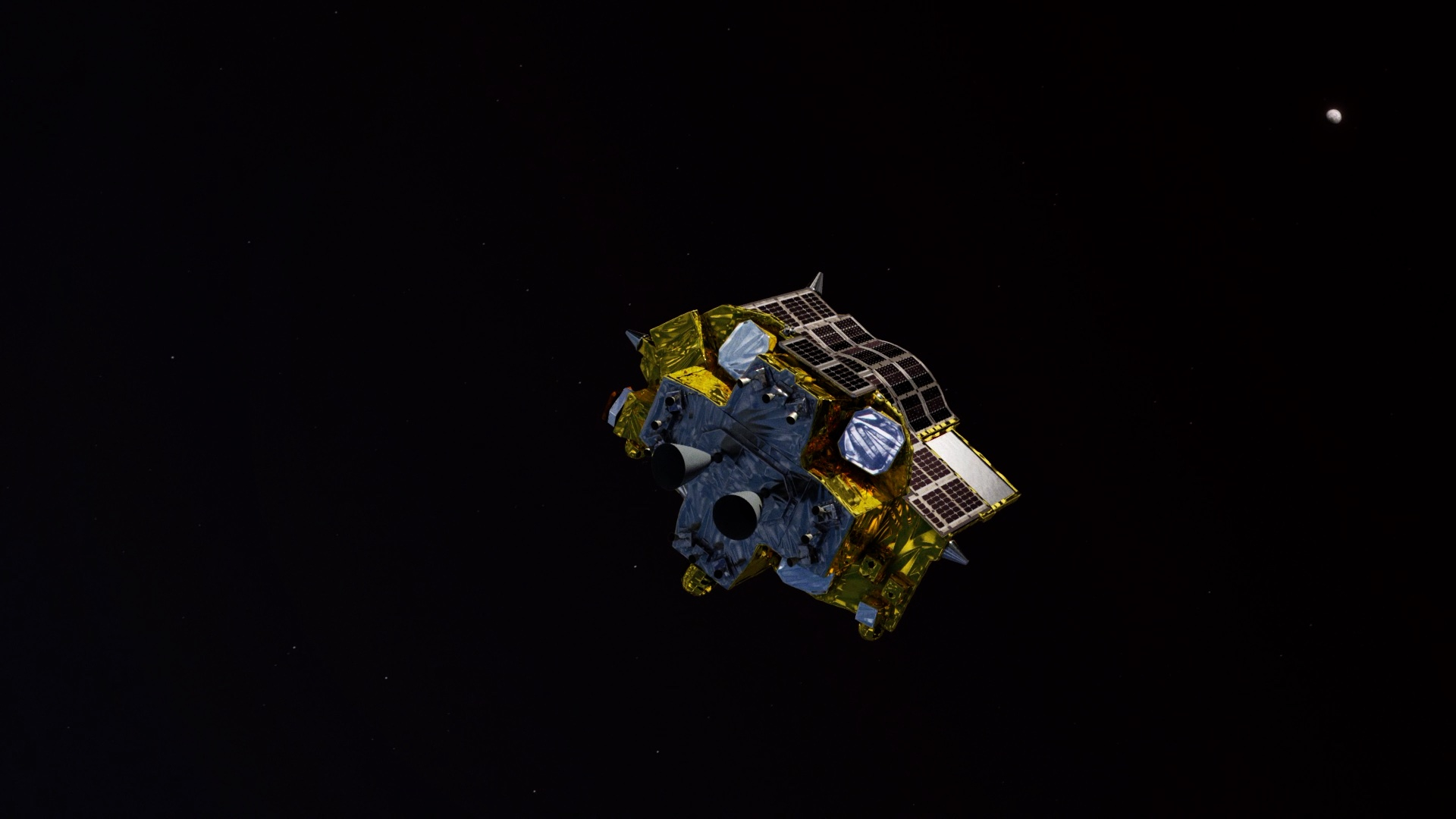Japan's SLIM moon lander completes 1st critical phase in Earth orbit
The spacecraft is preparing for insertion into lunar transfer orbit.

Japan's SLIM lunar lander has passed a first critical stage on its voyage to the moon.
The Smart Lander for Investigating Moon (SLIM) launched successfully on Sept. 6 with the main objective of demonstrating a highly accurate soft landing on the moon. Teams on the ground have since been working to verify the functionality of the spacecraft.
The lightweight moon lander has now passed a first critical operation period, meaning its solar panels, communications, propulsion and other systems are working well, the Japan Aerospace Exploration Agency (JAXA) announced on Sept. 14.
Related: Japan launches SLIM moon lander, XRISM X-ray telescope on space doubleheader (video)
JAXA said SLIM is now in an Earth orbit phase, where it will "spend about 20 days as it continues to verify the functioning of its onboard equipment and prepare for insertion into the lunar transfer orbit," according to JAXA.
JAXA published an optical observation of SLIM on Sept. 12, when the spacecraft was approximately 37,300 miles (60,000 kilometers) away from Earth.
#美星スペースガードセンター にて2023年9月7日に打ち上げられたX線分光撮像衛星 #XRISM と小型月着陸実証機 #SLIM の光学観測に成功しました🔭SLIMは撮影時にはなんと約6万kmも離れたところにいました!XRISMは雲のすきまから現れた一瞬を撮影した渾身の1枚です!#JAXA pic.twitter.com/JCZncavro9September 12, 2023
The XRISM X-ray observatory — which was launched into low Earth orbit on the same H-2A rocket as SLIM — was shown in a separate image.
Breaking space news, the latest updates on rocket launches, skywatching events and more!
SLIM's path to the moon is a longer than normal voyage that will see it pass out beyond the moon and loop back. This allows the spacecraft to make a smaller burn to enter lunar orbit, saving the spacecraft fuel and mass.
After it enters orbit in a few months' time, the probe will prepare to demonstrate a "pinpoint" lunar landing, with a much greater accuracy than earlier international missions have been able to achieve. In this case SLIM will aim to land within 330 feet (100 m) of a target point within Shioli Crater.
If successful, SLIM's tech and architecture could lead to more daring lunar and planetary exploration feats in the future. Sticking the landing would also make Japan only the fifth country to soft-land on the moon, after the Soviet Union, the United States, China and India.

Andrew is a freelance space journalist with a focus on reporting on China's rapidly growing space sector. He began writing for Space.com in 2019 and writes for SpaceNews, IEEE Spectrum, National Geographic, Sky & Telescope, New Scientist and others. Andrew first caught the space bug when, as a youngster, he saw Voyager images of other worlds in our solar system for the first time. Away from space, Andrew enjoys trail running in the forests of Finland. You can follow him on Twitter @AJ_FI.
